Sadly, science and technology have been destabilizing the Earth’s climate for decades. But now that we understand the mechanisms behind these changes, we have the power to prevent them from growing. Designers and artists from different countries attempt to draw public attention to the problem of climate change creating their artworks as visual reminders of the existing issues and their inevitable consequences.
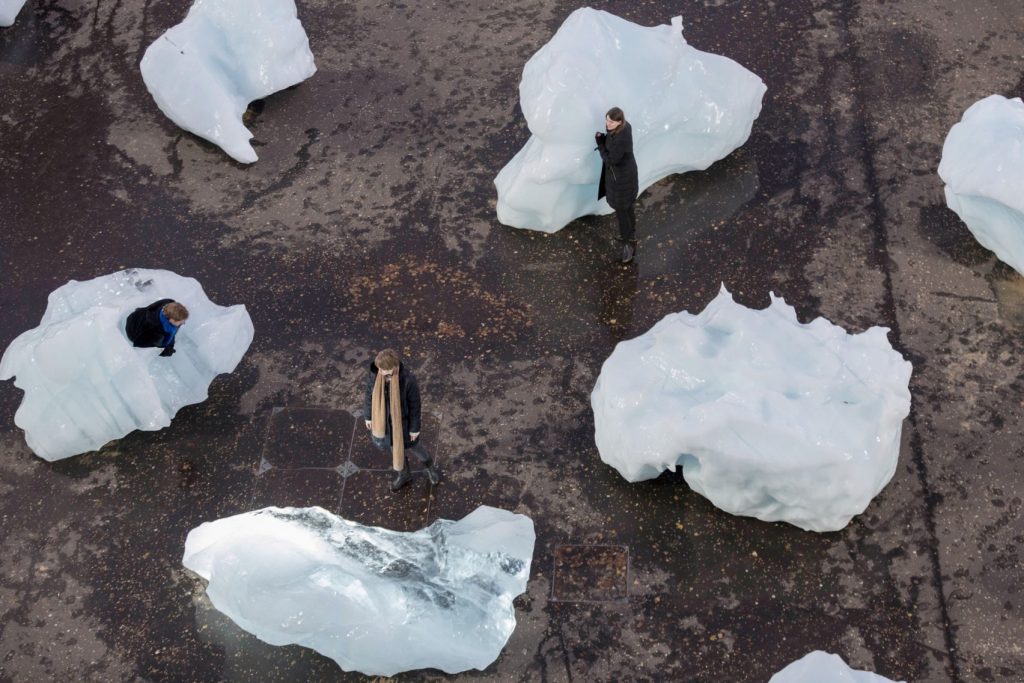
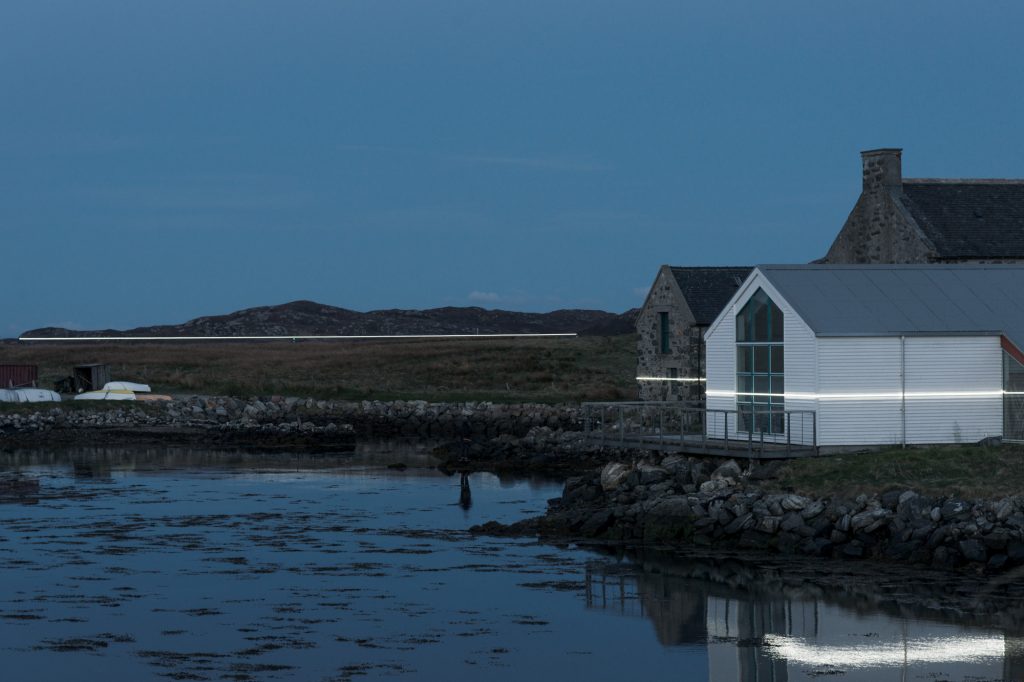
Lines (57° 59′ N, 7° 16’W) by Pekka Niittyvirta and Timo Aho
Finnish artists Pekka Niittyvirta and Timo Aho created Lines (57° 59′ N, 7° 16’W), an interactive site specific light installation which provokes a dialogue on how the rising sea levels will affect coastal areas, its inhabitants and land usage in the future.
Activating at high tide by sensors, three synchronized lines of light wrap around two structures and along the base of a mountain landscape and provide a visual reference of future sea level rise. The problem is especially relevant in the low lying island archipelago in the Outer Hebrides off the west coast of Scotland, where the installation is located. Such low lying territories are especially vulnerable to the catastrophic effects of climate change.
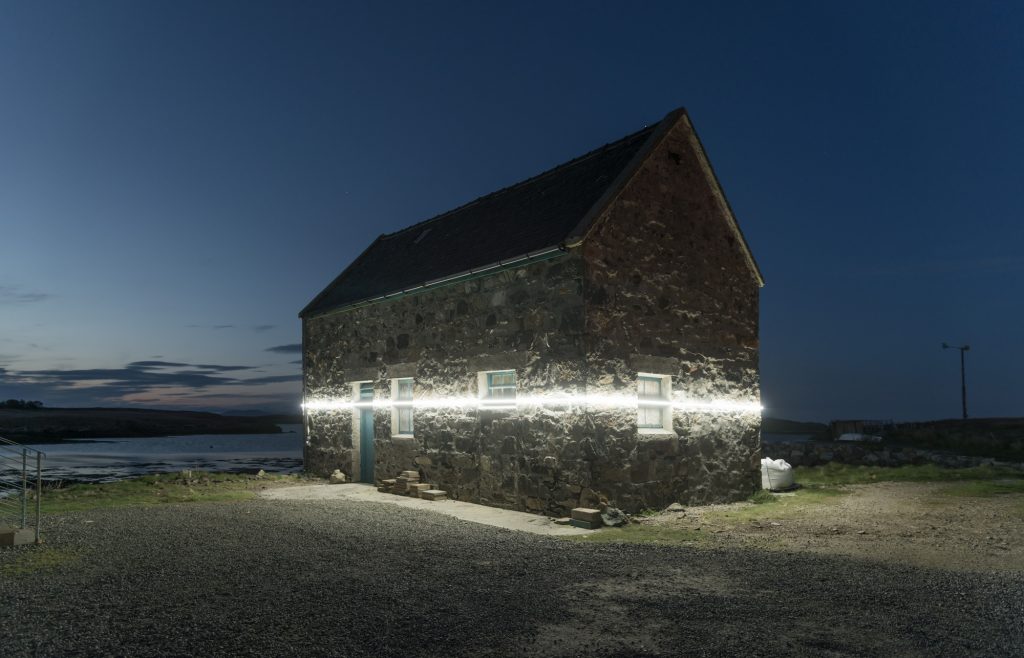
Lines (57° 59′ N, 7° 16’W) by Pekka Niittyvirta and Timo Aho
The installation utilizes such basic elements as light and lines to suggest two possible future scenarios. One is a future with everything below these lines going underwater due to the predicted rise of storm surge sea, the other one is where people attempt to take the problem of the climate change seriously to reverse the damage already done to the planet.

For Forest – The Unending Attraction of Nature by Klaus Littmann
‘For Forest – The Unending Attraction of Nature’ was a temporary art intervention by Basel-based artist and international contemporary art mediator Klaus Littmann who turned the Wörthersee Stadium in Klagenfurt into a mixed forest characteristic of Central Europe.
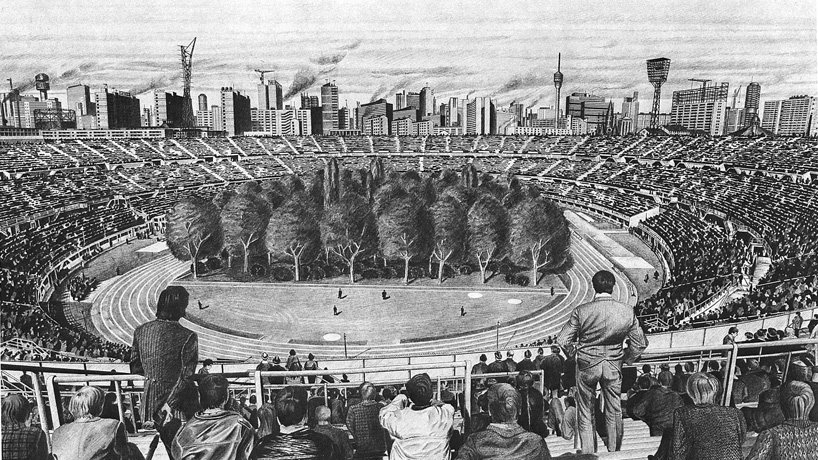
The Unending Attraction of Nature by Max Peintner
Littmann originally got the idea over 30 years ago when he first saw the pencil drawing “The Unending Attraction of Nature”, by Max Peintner (born 1937). To turn this striking dystopia into a reality, landscape architect Enzo Enea planted 300 trees, some of which weigh up to six tonnes, covering the stadium’s entire playing field.
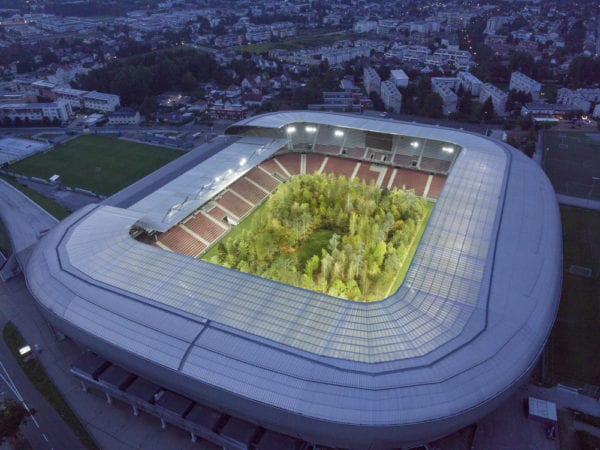
For Forest – The Unending Attraction of Nature by Klaus Littmann
Austria‘s largest public art installation is aimed to be looked upon as a warning. One day, we might have to admire the remnants of nature in specially assigned spaces, as is already the case with some zoo animals. The living, constantly changing landscape of the installation left visitors awed by the familiar sight placed in an entirely different context. With this monumental work of art, Littmann sharpened our awareness of the future relation between nature and humankind.
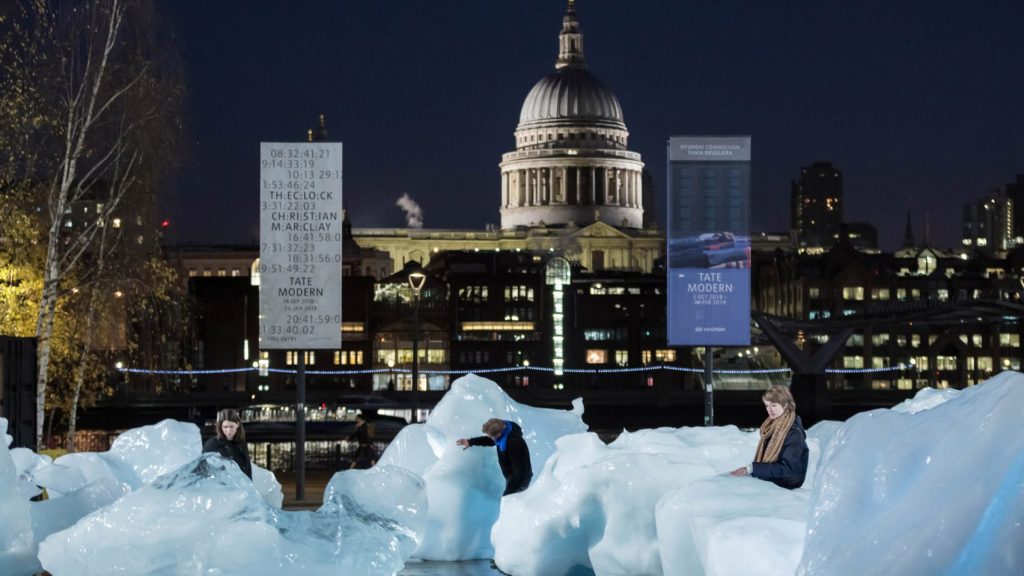
Ice Watch by Olafur Eliasson (also header image)
To visualize his warning against climate change, Danish-Icelandic artist Olafur Eliasson extracted 30 blocks of glacial ice from the waters surrounding Greenland and placed them in public spaces across London, where they were left to melt.
Titled Ice Watch, the temporary installation was aimed to inspire public action against climate change and to serve as a visual reminder of its impact on the environment – for the government, big companies and people at large who normally perceive melting ice in so far away Greenland as something abstract.
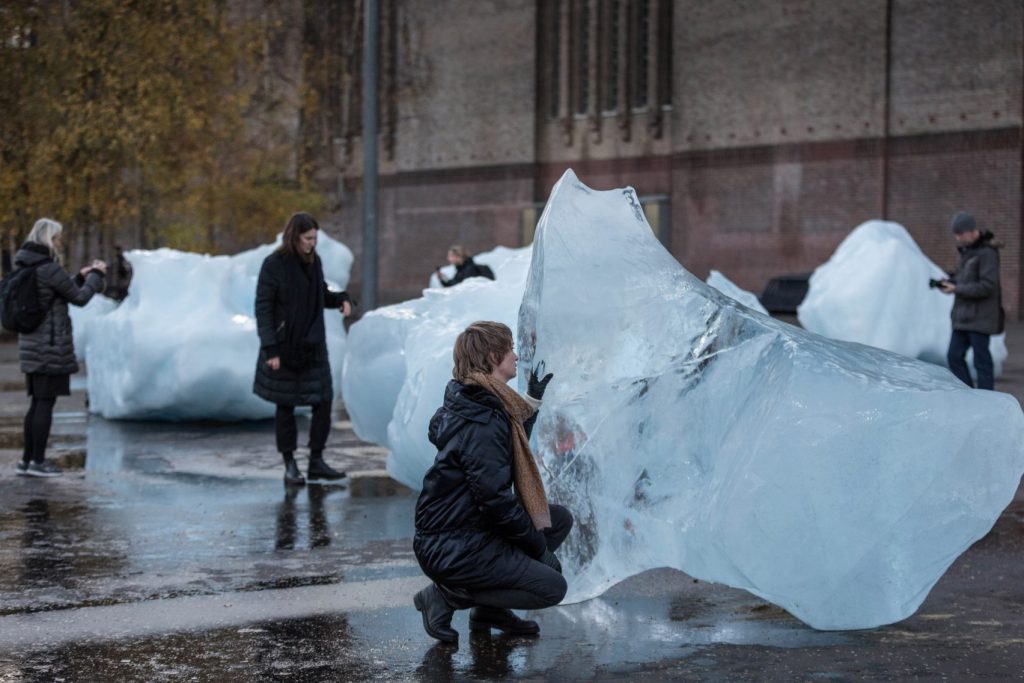
Ice Watch by Olafur Eliasson
To make the problem more tangible, Eliasson worked with geologist Minik Rosing to transport over 100 tonnes of free-floating, glacial ice from the waters of the Nuup Kangerlua fjord in Greenland. The ice had separated from its sheets and was discovered melting into the ocean.
‘It is a lot more physical; it suddenly gives a stronger sense of what it is they’re talking about when they say the Greenland ice caps are melting,’ Eliasson explained.
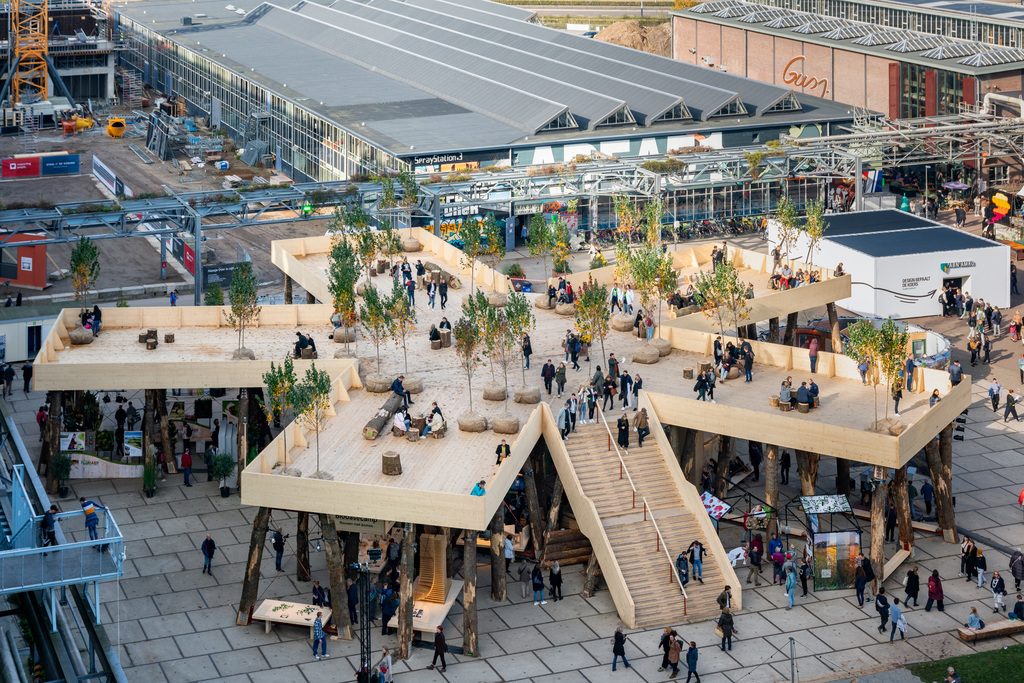
Biobasecamp by Marco Vermeulen
Biobasecamp is a pavilion designed for Dutch Design Week 2019 in Eindhoven by the local studio Marco Vermeulen, which intends to contribute to combating climate change and the quality of the Dutch landscape. Described by the team as ‘building against climate change’, the project is an architectural expression of how replacing conventional building materials such as concrete and steel with wood can reduce the amount of CO2 and nitrogen in the atmosphere.
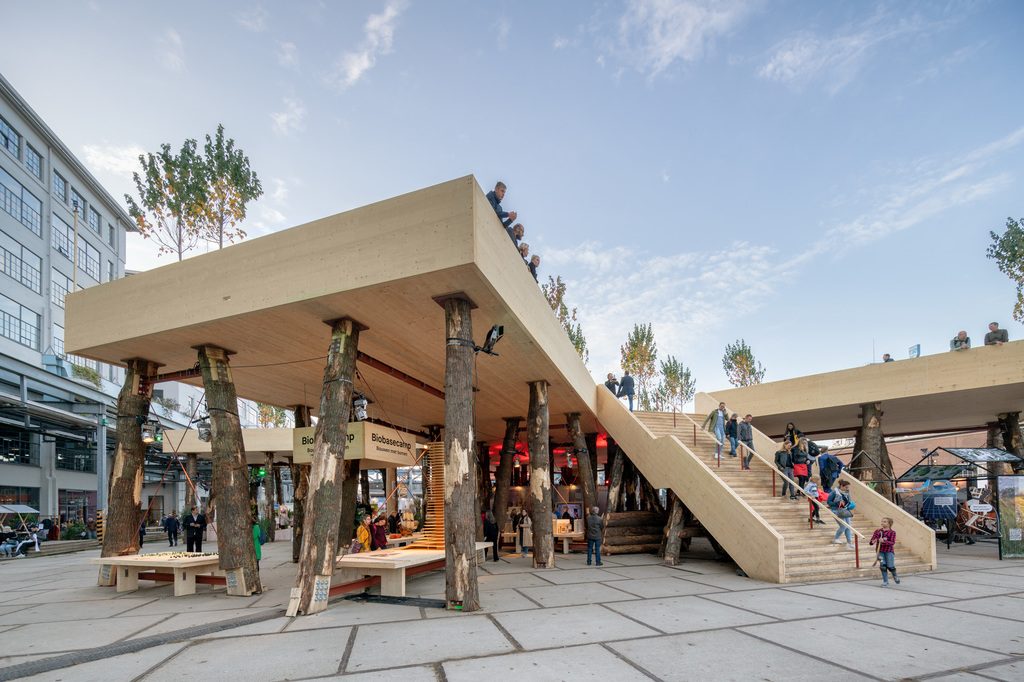
Biobasecamp by Marco Vermeulen
The Biobasecamp showcases the structural possibilities of solid wood as main building material in an effort to encourage a new era of environmentally-friendly construction. The pavilion’s structural elements are made of large prefabricated modules made of cross laminated timber (CLT) having a nice tactile quality. This construction method shows the possibilities for higher mounting speed and lower construction costs.
The modular solid wood elements can easily be replaced or adjusted as well as be reused as floor elements in, for example, new homes. The deck of the construction is supported by strains of poplars that were recently on the A2 motorway, but had to be cleared due to their age and the associated risk of being blown over.